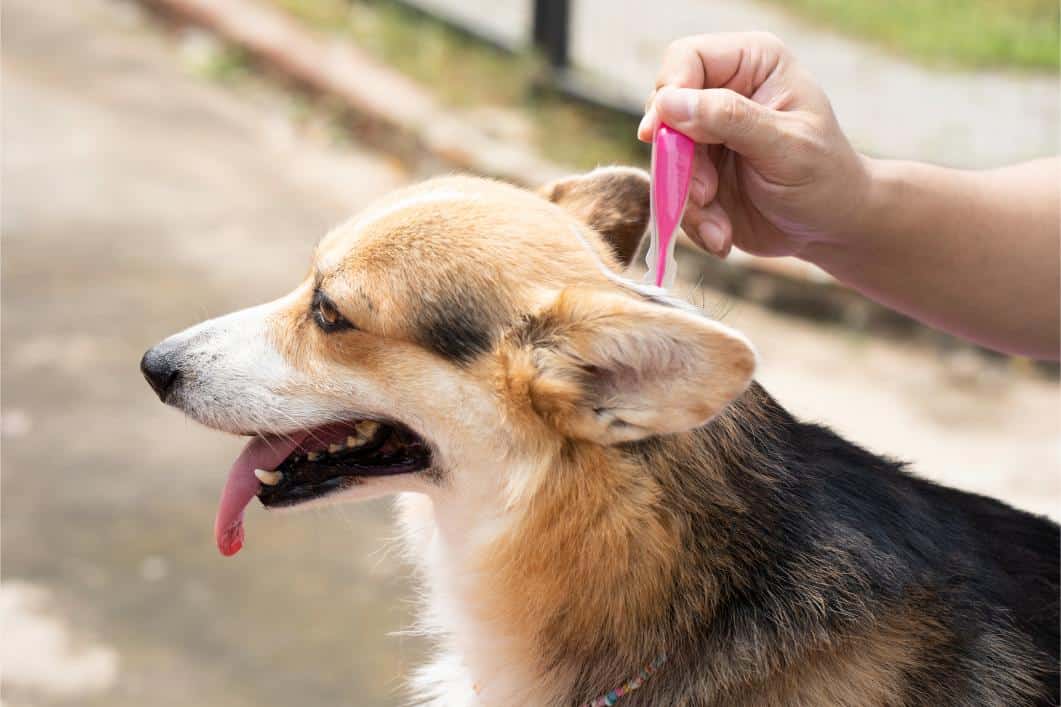Flea and Tick Prevention

The fact that parasites exist can be fairly abstract. It’s enough to know that they’re out there, but you can easily forget about them. That is, until you have to deal with them. Among the worst offenders, fleas and ticks are always ready, waiting, and hungry.
A Year-Round Approach
Between climate change, habitat encroachment, travel, and parasite life cycles, it is essential to maintain year-round parasite prevention tactics. Whether you choose 1 or 3 month chewable, a yearly injectable, topical medications, or a combination, ensuring a pet is protected from internal and external parasites could be one of the best things you ever do for their lifelong health.
We can help you find the right product for your pet’s age, weight and lifestyle. It is important not to have any lapses between doses. Diagnostic testing may be required to eliminate the risk of administering parasite prevention medication during an active infection.
What’s Up With Fleas?
A pet might go their entire life without ever attracting a flea, let alone fighting off a household infestation. But the risk is definitely not zero. Consequently, safeguarding a pet from fleas throughout the year is an important component of preventive wellness. An unprotected pet can pick up a single flea anywhere. Once home, a single flea can turn into a nightmarish infestation in no time.
Beyond the Nuisance
A flea infestation can be very challenging to combat. Perhaps the only thing worse is the allergic reaction some pets have to flea saliva. Flea allergy dermatitis can make an otherwise calm, collected pet absolutely crazed with itching. Left alone, fleas can also lead to anemia, tapeworms, and the following flea-borne diseases:
- Plague
- Typhus
- Cat scratch disease
Tick Troubles
All it takes is one tick to be attached for about a day to turn a pet’s life upside down. Lyme disease is a huge concern for Oregonians because it creates the following symptoms:
- Stiffness and/or lameness of the limbs
- Painful gait
- Lethargy or reluctance to move around
Lyme disease can be effectively treated if caught early, but prevention is the best possible strategy. If you see a tick on your pet, immediate removal is necessary to prevent the spread of disease.
- Use fine-tipped tweezers to grab onto the tick as close to the pet’s skin as you can. If the head is detached from the body and remains under the skin, inflammation and infection can result.
- With a steady hand, pull the tick out smoothly. Avoid twisting or turning of the tweezers.
- Place the tick in a sealed baggie; identification of the tick’s species and testing for disease may be necessary.
- Thoroughly disinfect the bite sight, your tools, and your hands.
Fleas and Ticks Are No Laughing Matter
Our team at Amberglen Pet Care is always here to assist you during peak parasite season, and all year long. Please call us at (503) 498-8506 with any questions or concerns.
